Secret Compartments and Mechanisms
For centuries, secret compartments have been built into boxes and cabinets to hide their owner’s most valuable possessions, gold coins or private documentation. It wasn’t until the start of the 19th century that the inclusion of these secret, concealed compartments and mechanisms became more of an art form and a true symbol of a box maker’s ability and ingenuity.
Secret compartments could be hidden anywhere in the box, under false floors, behind false walls and panels, dropping down from above drawers, behind mirror panels or even in plain sight, blending like a chameleon to the surrounding structure. Even discovering a location of a possible concealed compartment is only half the task; one has to then figure out how to gain access. Spring-loaded walls and floors, hidden push buttons, slide-out floor and wall panels, false spring-loaded screw heads are just a few of the innovative methods that were used to reveal these compartments.
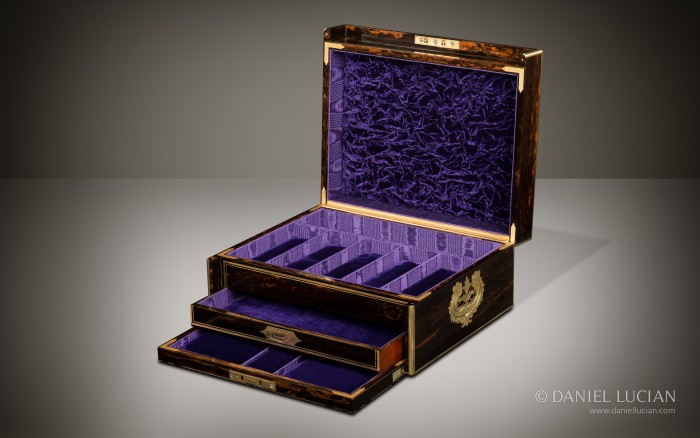
Asprey ‘Exhibition’ Piece – Antique Jewellery Box in Coromandel with Brass Inlay and Secret Compartments.
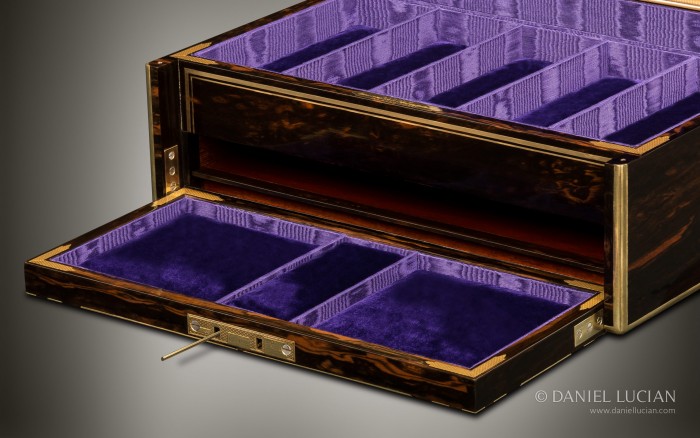
With the bottom drawer removed, access to the floor beneath is gained. Sliding a pointed implement into the top of the lock aperture engages a spring-loaded rod that travels through the front flap of the box to release a concealed spring-loaded floor unit.
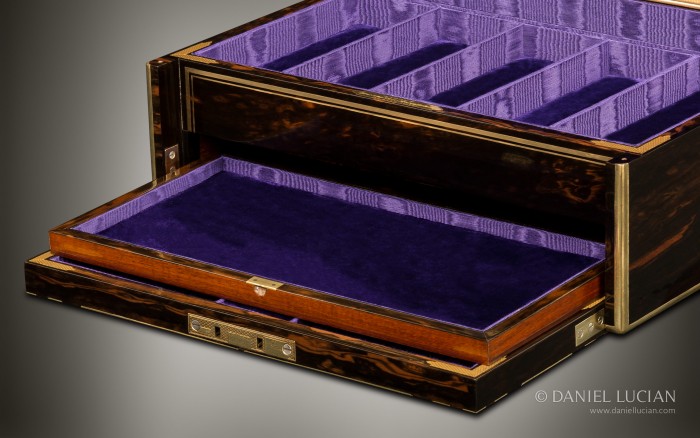
A hidden spring-loaded trigger in the front wall of the main compartment above releases a concealed jewellery tray from the ceiling of the drawer housing.
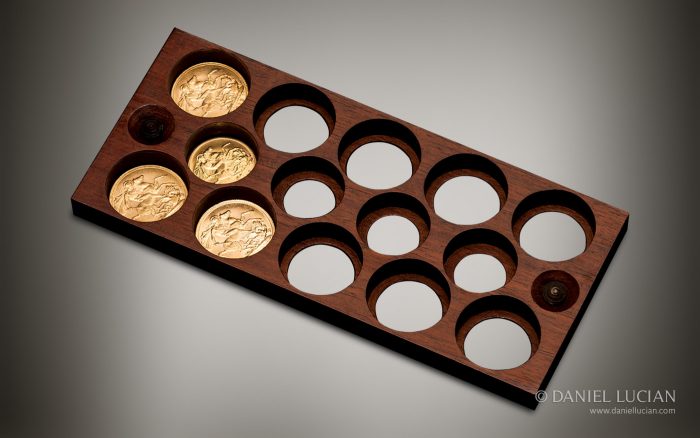
These apertures are cut to the exact diameter of the sovereigns and half sovereigns, each precisely holding the height of five stacked coins. This ensures that there is no movement or rattling to alert ‘unwanted visitors’ to their existence, or to that of the secret compartment itself.
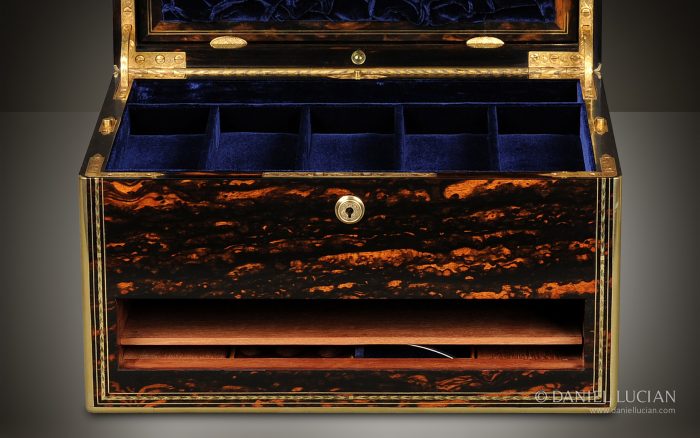
A secret floor panel springs up from the base of the box by pressing the right side of the inner wall.
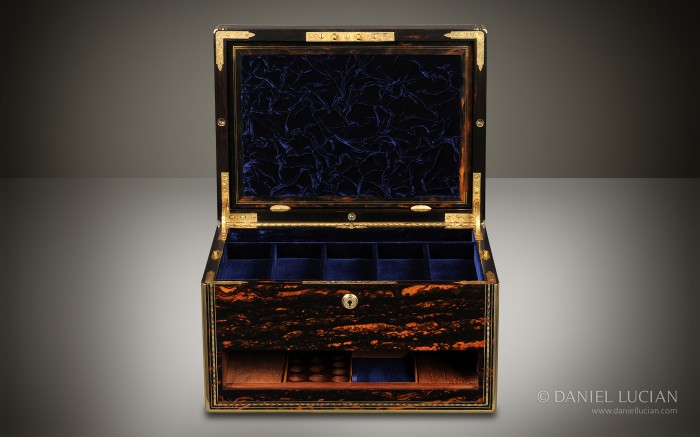
Once the floor is removed, a solid satinwood tray, holding an internal gold sovereign tray, can be removed.
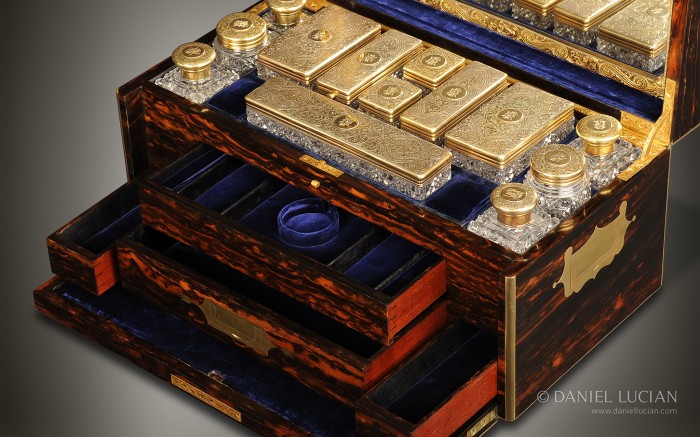
The top secret drawer can be released by pressing down on a false screw in the Jenner & Knewstub maker’s plate, The two slim lower secret drawers are opened by pressing down on the spring-loaded floor compartments to the back left and right of the box (underneath the bottles).
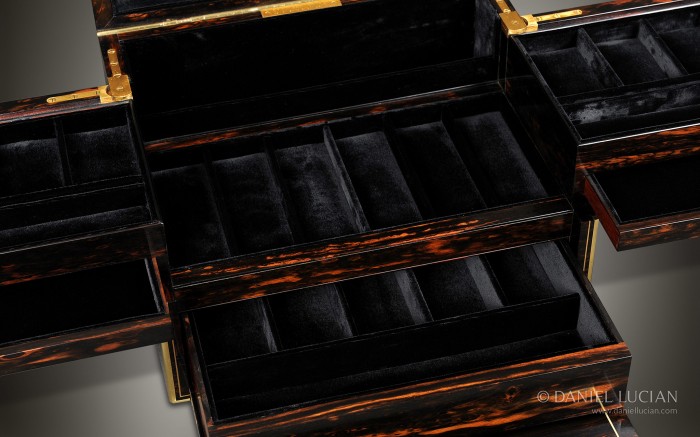
Pressing down on the brass manufacturer’s plate springs out a large central drawer. Additionally, two thin secret drawers can be released from the cantilevered compartments by pressing down on the spring-loaded floors behind.
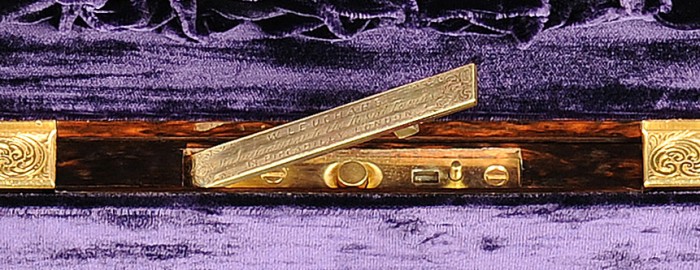
Pushing on a concealed spring-loaded button in the wall, pops up the engraved brass manufacturer’s plate. This then reveals a further spring-loaded button to open the lower jewellery drawer.
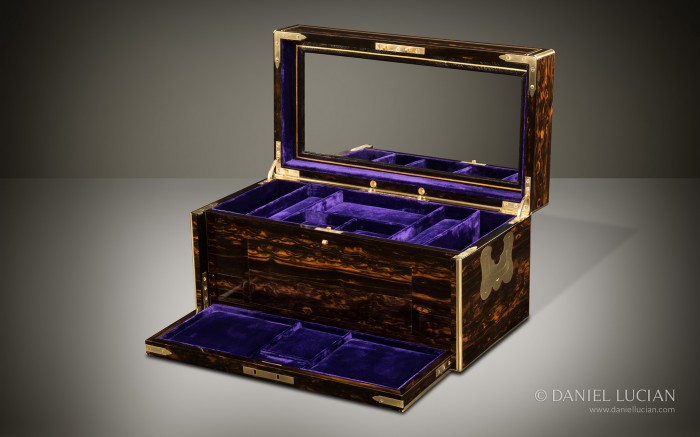
The front flap of the box opens out. This reveals what, at first glance, seems to be a coromandel interior wall. However, fitted within this wall are four concealed secret drawers…
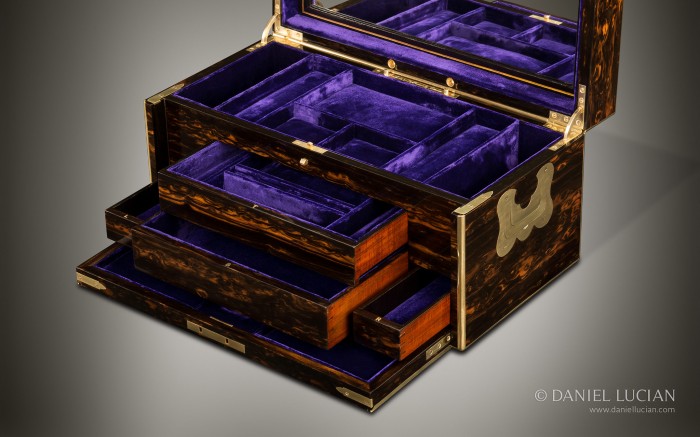
Two push buttons, set into the manufacturer’s plate, release two central spring-loaded drawers from the front of the box. Concealed floor mechanisms in the main compartment above, release two further spring-loaded drawers to the left and right of the central drawers.
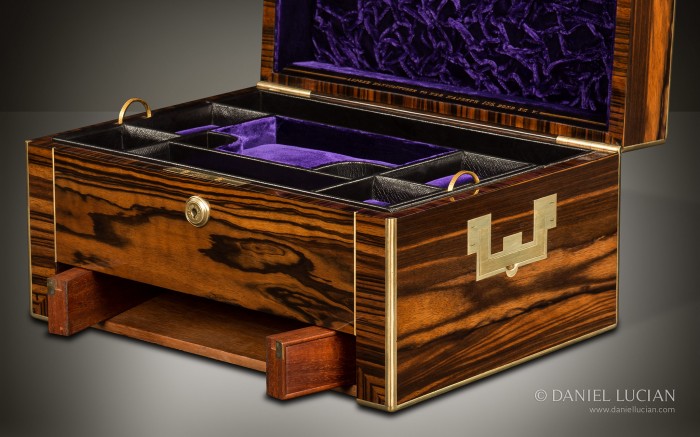
With the lower drawer removed, two concealed spring-loaded boxes can deployed from the left and right side of the drawer housing. These are triggered by pressing two hidden buttons near the floor of the main compartment above.

These concealed boxes, made from mahogany, have sliding tops that reveal velvet-lined compartments within.
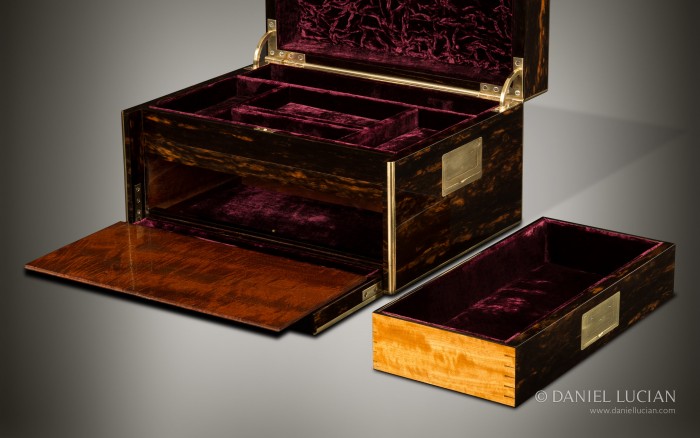
With the lower drawer removed, access is gained to the spring-loaded floor. Pushing the floor backwards unlatches it, allowing it to pop up; this then reveals a concealed jewellery area beneath.
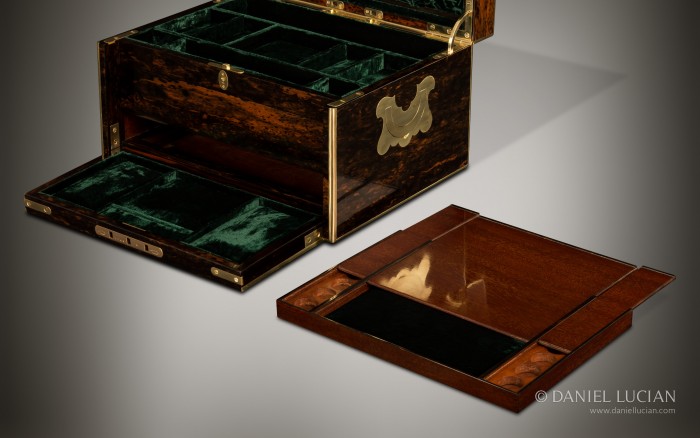
With the bottom drawer removed, a concealed spring-loaded floor unit is accessible. This floor unit, made from solid mahogany, is removed by pushing it backwards slightly, thus unlatching it and allowing it to pop up; it contains three slide-covered sections, two of which containing fourteen gold sovereign holders.
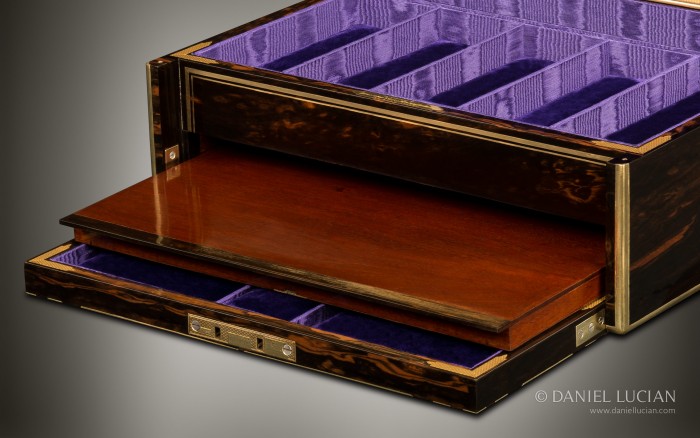
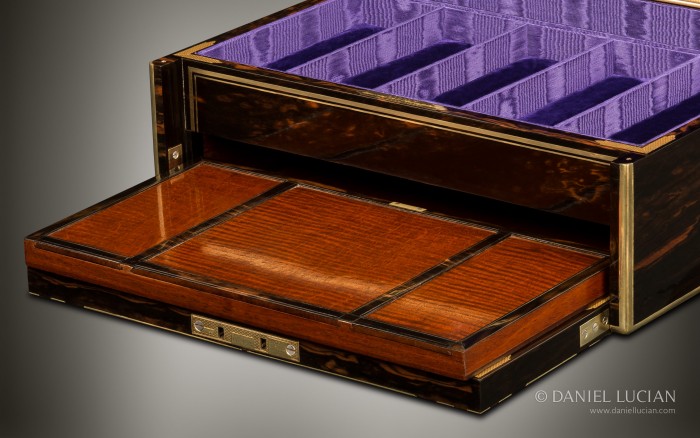
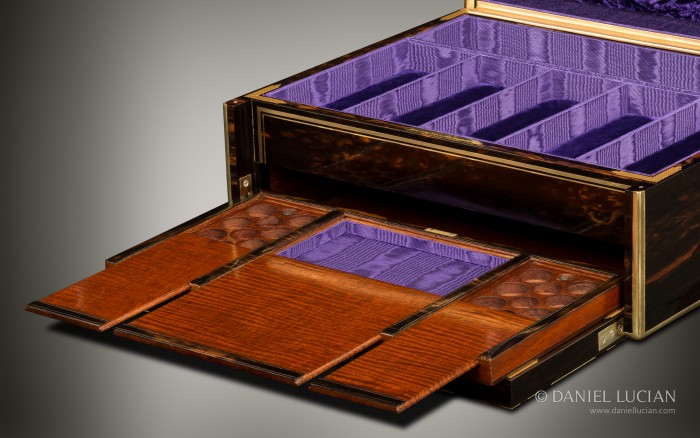
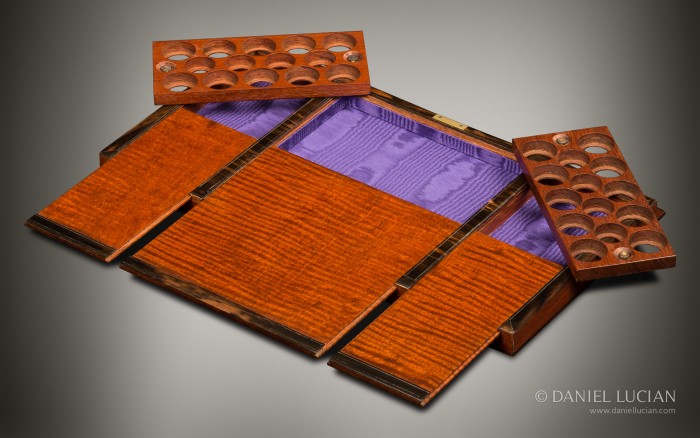
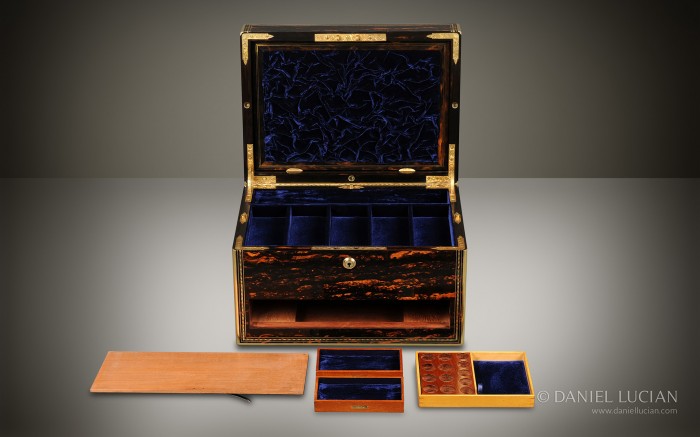
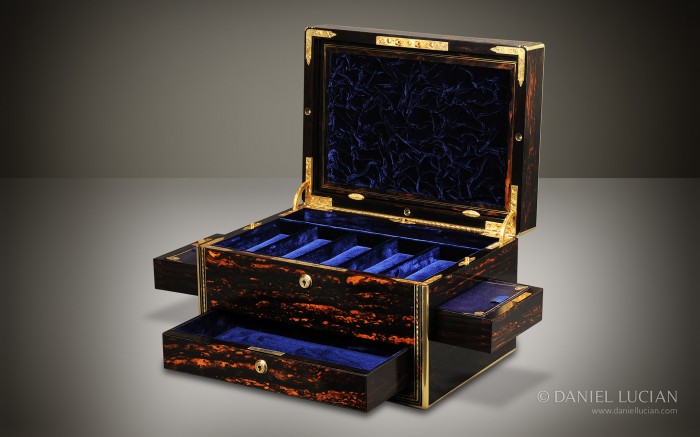
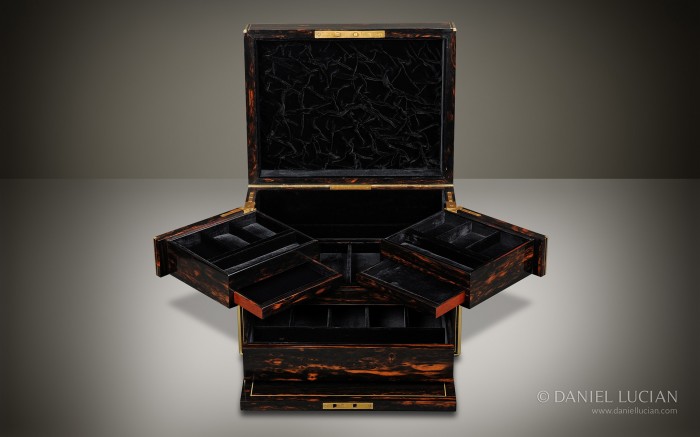
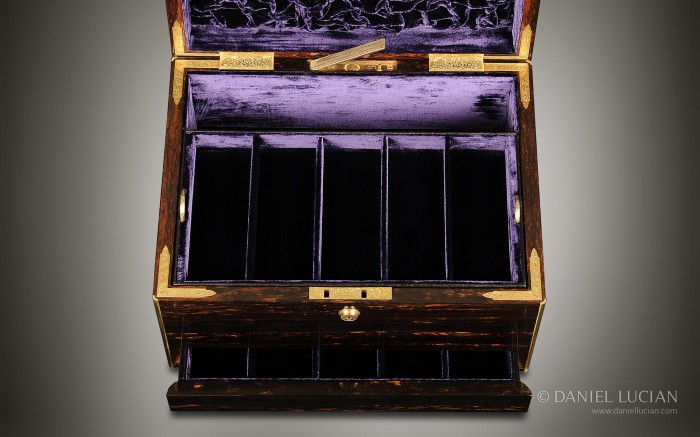
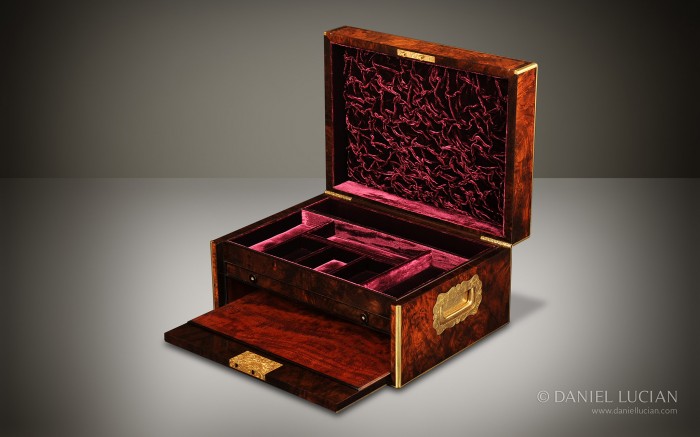
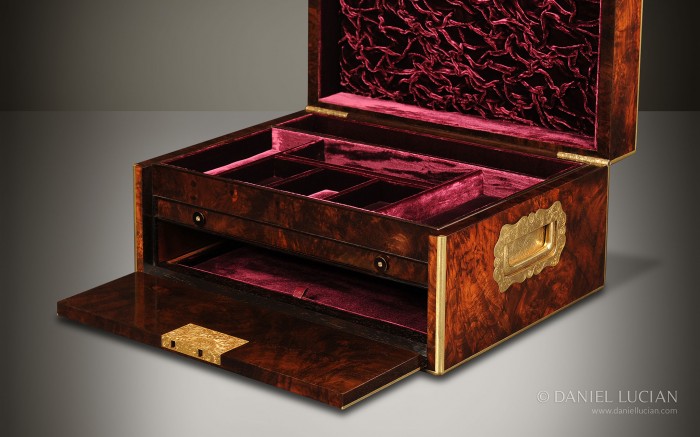
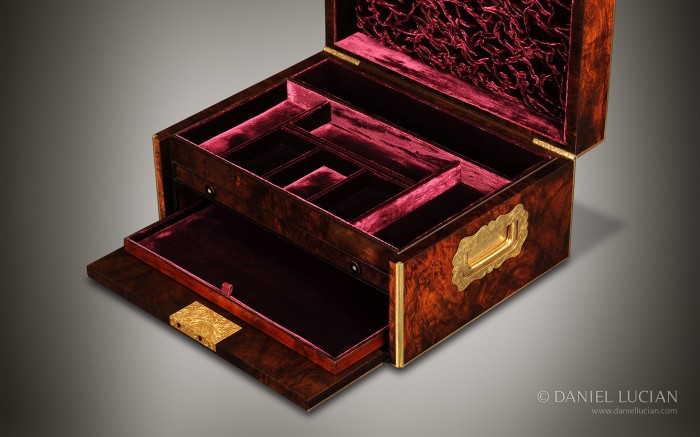
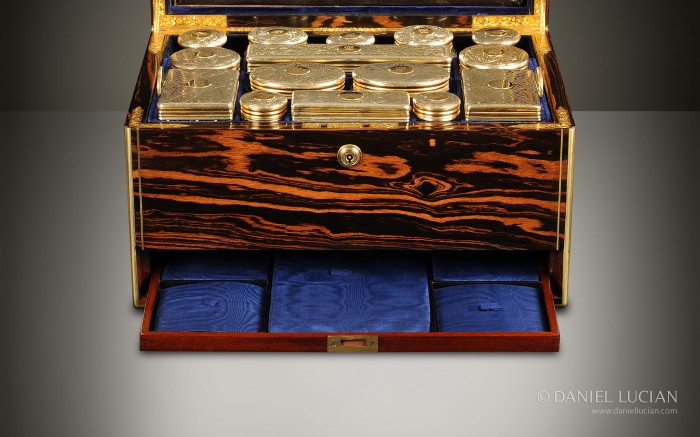
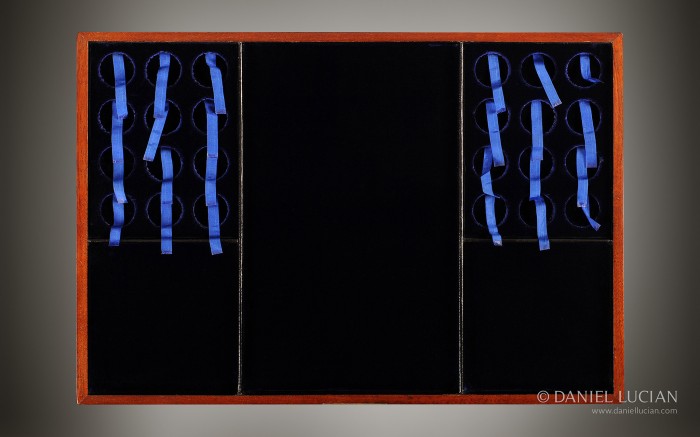
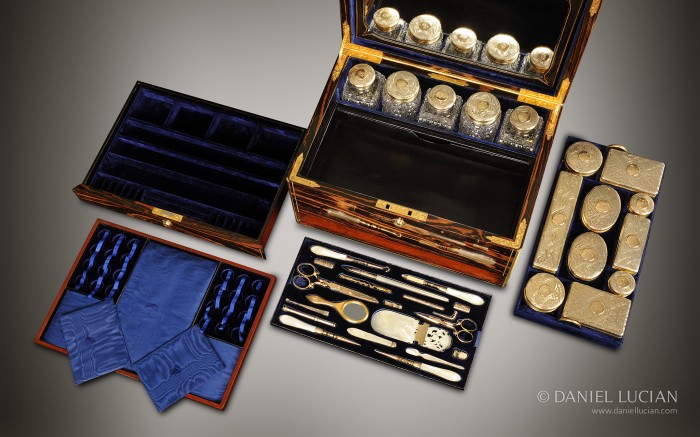
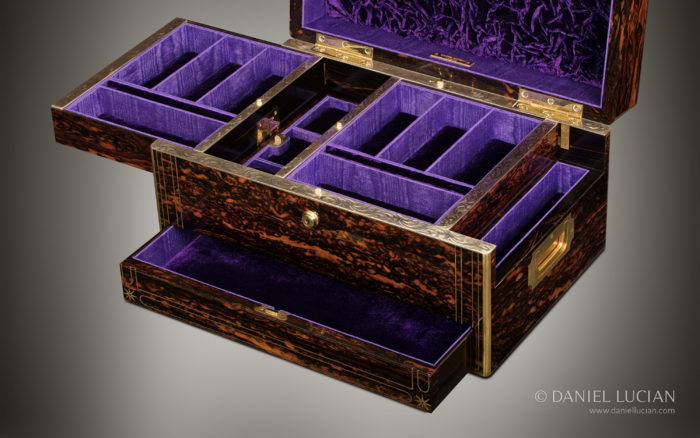
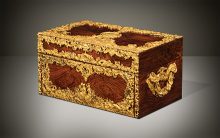 Price On Application
Price On Application